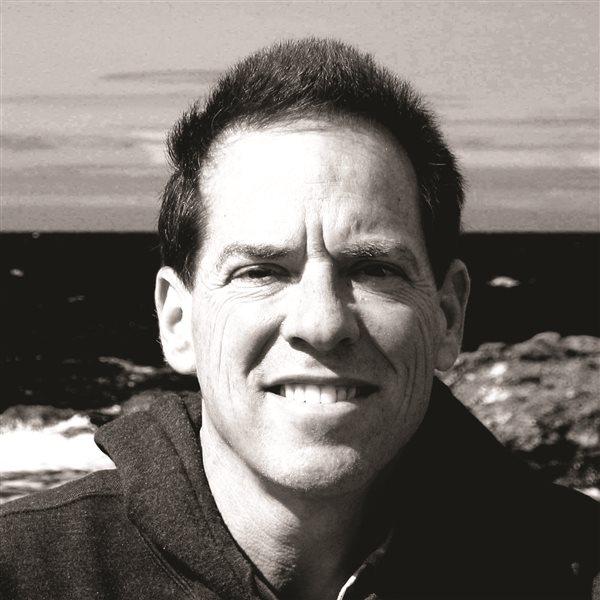
Usually the skies between Flagstaff and Palm Springs are brutally blue. But this would be no normal journey. En route to AOPA Summit, Jean and I launched our Flying Carpet over a dense silvery blanket of prescribed-burn forest-fire smoke. When rare swirling clouds cloaked the primeval and sunbaked Mojave Desert, it seemed we were treading not mere miles, but the surreal mists of time. And in a sense, we were—at Summit I met someone connected to my hazy beginnings as a pilot.
Usually the skies between Flagstaff and Palm Springs are brutally blue. But this would be no normal journey. En route to AOPA Summit, Jean and I launched our Flying Carpet over a dense silvery blanket of prescribed-burn forest-fire smoke. When rare swirling clouds cloaked the primeval and sunbaked Mojave Desert, it seemed we were treading not mere miles, but the surreal mists of time. And in a sense, we were—at Summit I met someone connected to my hazy beginnings as a pilot.
Wandering the exhibits, I discovered Morey’s West Coast Adventures. Longtime instructor and pilot examiner Field Morey is legendary for his cross-country instrument-training courses. Field is now based in Medford, Oregon. But when I was a young University of Wisconsin student, he operated family owned Morey Field, just across Lake Mendota from Madison’s Truax Field where I learned to fly.
Introducing myself, I explained how, as a newly minted pilot, I’d often flown over Morey Field. We reminisced about examiner Claude Frickelton, who administered my private pilot checkride.
“Were you at Madison in 1970 when UW’s Sterling Hall Army Math Center was bombed?” asked Field. Forgotten memories of that sad and turbulent era flooded back.
I had arrived a year later, but well remember seeing blue sky through windows of the bombed-out building when walking to class. And the bombing’s ringleader, Karleton Armstrong, still dominated both the local news and antiwar T-shirts.
Field explained how a year before the bombing he’d hired Karleton’s younger brother Dwight, who swapped duties at Morey Field for flying lessons. “Dwight was the first employee I ever fired,” said Field. “After he’d worked there a few months and accumulated 10 hours of lessons, Karleton accused him of aiding the Vietnam War effort by transporting ROTC students for flight training. When Dwight refused to continue driving the shuttle, I fired him.”
Then, on New Year’s morning, 1970, Field received a phone call from the Sauk County Sheriff asking, “Do you own a Cessna 150, N63526? We found it abandoned in two inches of snow this morning at Sauk Prairie Airport.”
Convening at Morey Field, which was closed for the holiday, Field and chief instructor Jake Bloyer discovered the hangar door had been jimmied and several airplanes displaced. “It seemed odd at the time that thieves would bypass more convenient aircraft to get at the 150,” said Field. Driving to Sauk Prairie, he and Jake found the trainer sitting on the snow-covered runway with its flaps extended.
“New Year’s Eve night had been IFR in light snow,” said Field. Other than a dead battery from the master switch being left on, the airplane was in good enough condition to fly home.
“The next day, law enforcement agents swarmed over Morey Field and combed our training records,” said Field. “Only months later did I learn that Dwight and Karleton Armstrong had stolen the plane, and used it to drop a homemade fertilizer bomb on the Badger Army Ammunition Plant near Baraboo.”
I clearly remembered that incident. Despite minimal damage, it stirred nationwide panic about potential terrorist attacks.
“Moving those other flyable airplanes out of the hangar suddenly made sense when I realized the stolen 150 was the one Dwight trained in,” said Field. “And it turned out the nighttime snow landing was illuminated only by Karleton’s girlfriend’s auto headlights!”
Based on this incident, the Armstrongs proclaimed themselves the “New Years Gang,” and with two other conspirators continued an antiwar crime spree culminating in the bombing of Sterling Hall on August 24, 1970. The massive blast killed one researcher, injured three others, and damaged two dozen buildings. Three perpetrators ultimately served time in prison, but the fourth was never caught.
I told Field that I, too, was connected to the story. “The judge who extradited Karleton after he was later captured in Canada was a distant relative of mine. I told few people at the time, because antiwar sentiment was still so heated.
Following two days of Summit seminars, social events, and hangar talk, Jean and I steered homeward. Beyond the Colorado River we detoured south over lower terrain to avoid ice-filled cumulus. Only in the final moments of flight was it clear we’d land at home versus elsewhere. But the clouds parted as we approached Flagstaff, and we completed our journey amid stunning panoramas of rainbows and red rock. We’d returned to the present.
“Your piloting experience really pays off on a trip like this, between tough weather decisions and flying into a busy convention,” said Jean. Could be, but even today I couldn’t imagine duplicating the despicable long-ago feat of a 10-hour student pilot on his first “solo” flight—tackling awful weather at night, navigating to another airport, and landing by auto headlights on a snow-covered runway.



